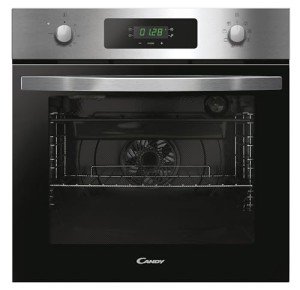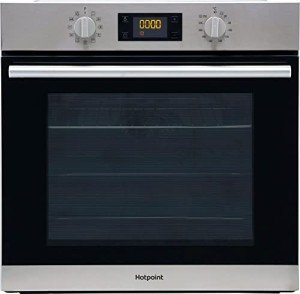large-single-oven3246
large-single-oven3246
Ten Things You Shouldn’t Post On Twitter
The Comprehensive Guide to Single Built-In Ovens: Features, Benefits, and FAQs
Introduction
In contemporary kitchen areas, the combination of appliances is essential to attaining a streamlined design. Amongst these home appliances, the built-in oven stands apart as a staple for daily cooking. In particular, single built-in ovens are gaining appeal due to their space-saving design and performance. This post checks out the features, advantages, and commonly asked concerns about single built-in ovens, helping house owners make notified choices.
What is a Single Built-In Oven?
A single built-in oven is a cooking appliance created to be embedded within kitchen cabinetry, providing a seamless look that complements the kitchen’s visual. Unlike freestanding ovens, built-in variations use a variety of features and styles that cater to modern-day culinary requirements.
Key Features of a Single Built-In Oven
Single built-in ovens come with a range of functions that improve performance and user experience. Here are some of the most crucial attributes:
| Feature | Description |
|---|---|
| Size and Capacity | Typically varies from 24 to 30 inches in width; suitable for numerous kitchen sizes. |
| Cooking Modes | Numerous settings, including convection, baking, broiling, and in some cases steam cooking. |
| Controls | Digital touch controls or conventional knobs with accurate temperature settings. |
| Self-Cleaning Options | Lots of designs consist of self-cleaning functions for much easier upkeep. |
| Energy Efficiency | Created to consume less energy, often with an A+ energy score. |
| Security Features | Consists of kid locks, cooling systems, and temperature level sensing units. |
| Design Options | Available in numerous surfaces (stainless steel, black, and so on) and styles (modern, timeless). |
Advantages of Using a Single Built-In Oven
The adoption of single built-in ovens offers various benefits:
- Aesthetics: They produce a modern-day and sleek look in the kitchen, mixing perfectly with cabinets.
- Space-Saving: Ideal for smaller sized kitchen areas, they are designed to optimize space by being built into walls or cabinets.
- Increased Functionality: Many designs feature sophisticated cooking technology such as smart features that permit remote control via smart device.
- Easy to Use: With instinctive controls, built-in ovens are easy to use and ideal for both novice and knowledgeable cooks.
- Improved Cooking Performance: Convection models distribute hot air for even cooking results.
Popular Brands and Models
A number of brands dominate the single built-in oven market, each offering distinct functions to deal with customer choices. Here are some notable ones:
| Brand | Popular Models | Secret Features |
|---|---|---|
| Bosch | HBN8451UC, HBL8453UC | European design, convection heat, Wi-Fi connectivity. |
| Electrolux | E30SO75GPS, E30SO75PPS | Variations in size, advanced barbecuing abilities. |
| Samsung | NV51K6650SG | Dual convection, wise technology, versatile cooking modes. |
| Whirlpool | WOS51EC0HS | Budget-friendly, reliable, self-cleaning features. |
| LG | LWS3063ST | Smart innovation, air fry mode, streamlined aesthetics. |
Installation Considerations
Installing a single built-in oven includes specific considerations:
- Measurement: Ensure that the space allotted works with the oven’s measurements.
- Ventilation: Adequate airflow should be kept for security and performance.
- Electrical Needs: Check voltage requirements and guarantee proper electric outlets are available.
- Professional Installation: While some property owners might select DIY, working with a professional can mitigate installation problems.
Frequently Asked Questions (FAQs)
-
How much space is needed for a built-in oven?
- A built-in oven normally needs a designated area that varies by model, generally from 24 to 30 inches in width. Always describe the producer’s specifications for precise measurements.
-
Can I install a built-in oven by myself?
- While some might attempt a DIY setup, it is frequently recommended to employ an expert to make sure correct fitting, electrical connections, and ventilation.
-
Are single built-in ovens more pricey than freestanding designs?
- Typically, yes. Single built-in ovens tend to cost more due to their design, setup, and additional features.
-
What are the differences between convection and regular ovens?

- Stove have a fan that distributes hot air throughout, leading to even cooking. Traditional ovens depend on convected heat, which may result in locations and unequal cooking.
-
What maintenance is required for a built-in oven?
- Routine cleansing, ensuring vents remain unobstructed, and monitoring functions. Numerous designs offer self-cleaning options, which simplify upkeep.
Single built-in ovens represent a merging of design, benefit, and efficiency in modern kitchen areas. With a myriad of functions and designs available, these ovens deal with various cooking requirements and choices. Whether you are a hopeful chef or an occasional home cook, acquiring an appropriate single built-in oven can boost your cooking experience while raising your kitchen’s aesthetic. Careful consideration of functions, setup requirements, and upkeep will result in a rewarding investment in this necessary kitchen home appliance.



